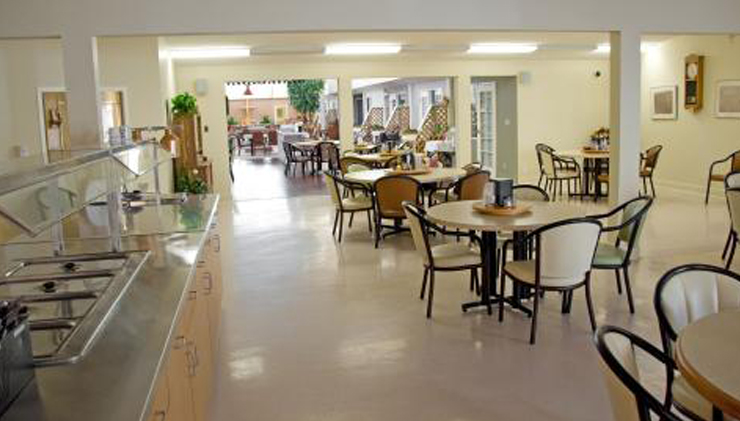 Could Your Business Face a Ladies’ Night Lawsuit?
Could Your Business Face a Ladies’ Night Lawsuit?Running a profitable senior living facility is becoming more difficult. In addition to rising insurance costs, reduced property and liability insurance capacity is making it harder for facilities to find the coverage they need to manage their risks. Controlling costs requires strong risk management and creative insurance strategies.
The Worker Shortage Is Impacting Liability Exposures
The senior living community is battling a serious staffing shortage, increasing liability exposures.
A 2023 poll from LeadingAge found that 92% of nursing home provider members and 70% of assisted living provider members are experiencing a severe staffing shortage. Overall, 64% of respondents say the workforce situation has not improved since 2022. It’s common to have 20% of positions open with no applicants. The remaining staff have to take on heavier workloads, and providers are tapping reserve funds to pay for pricey staffing agency personnel.
Insurance Journal warns that high staff turnover generally correlates with issues that may also lead to losses, making this a liability issue for insurers. For example, the CNA Aging Services Claim Report shows that a lack of appropriate staffing may contribute to allegations of failure to monitor and lead to an increase in unwitnessed falls or delayed identification of injuries.
It’s easy to see how high turnover could put residents at risk and expose facilities to claims:
- New or temporary workers may be unfamiliar with the facility’s policies, leading to failures in documentation and carrying out procedures incorrectly.
- Inexperienced workers may not know how to handle serious issues, such as resident health complaints or wandering.
- Busy workers may cut corners because they don’t have the time to do everything.
Short-staffed facilities have a high risk of claim frequency and severity, and as a result, some insurers are tightening the reins, making it increasingly difficult to obtain liability coverage.
Commercial Property Rates Are Surging
Like all industries, the senior living community is also dealing with rising commercial property rates.
Recent data from CIAB shows the extent of the problem. Commercial property insurance rates have been rising since around 2017. However, in the first quarter of 2023, rates increased by a recent high of 20.4%. In the third quarter of 2023, rates went up by a steep 17.1%.
Reduced capacity has also been an issue as property insurance companies reduce their exposures in high-risk areas, sometimes leaving entire states. For example, AP News says State Farm announced in the summer of 2023 that it would no longer accept business or personal lines of property and casualty insurance in California. Allstate has also paused new homeowners, condo, and commercial insurance policies in the state.
Rising inflation and natural disaster losses are two common explanations for the challenging property insurance market. In recent years, the number of weather and climate disasters with losses of at least $1 billion has been rising steadily – and that’s with adjustments for inflation. In 2023, NOAA says there were 28 billion-dollar events, a new all-time high.
How Senior Living Facilities Can Take Control of Risk
Since risk management and cost management are inextricably linked, controlling costs requires measures to control risks.
- Focus on training. Claims often arise from the day-to-day practices of workers. Their default practices may not always align with your facility guidelines and policies. As new workers enter your facility, they must be trained to adhere to your policies and prescribed best practices. Even experienced workers need training refreshers.
- Prioritize worker wellbeing. Workers who are suffering from stress and burnout may be more prone to mistakes. They may quit, which creates heavier workloads and even more stress and burnout for the remaining workers, resulting in a vicious cycle. Leaders can break the cycle by ensuring workers have the time off they need to recharge providing reasonable workloads, and by offering employee benefits that support mental health and wellbeing.
- Document everything. Not everything that goes wrong is the facility’s fault. However, without documentation, it may be difficult to defend your team. Unfortunately, when workers are busy, documentation may fall by the wayside. Regular documentation audits can prevent this from happening.
If you’re struggling with insurance and risk management, reach out to us. Heffernan Insurance Brokers can help you explore all your options, including excess and surplus insurance, parametric insurance, captive insurance, and self-insured options.
Running a profitable senior living facility is becoming more difficult. In addition to rising insurance costs, reduced property and liability insurance capacity is making it harder for facilities to find the coverage they need to manage their risks. Controlling costs requires strong risk management and creative insurance strategies.
The Worker Shortage Is Impacting Liability Exposures
The senior living community is battling a serious staffing shortage, increasing liability exposures.
A 2023 poll from LeadingAge found that 92% of nursing home provider members and 70% of assisted living provider members are experiencing a severe staffing shortage. Overall, 64% of respondents say the workforce situation has not improved since 2022. It’s common to have 20% of positions open with no applicants. The remaining staff have to take on heavier workloads, and providers are tapping reserve funds to pay for pricey staffing agency personnel.
Insurance Journal warns that high staff turnover generally correlates with issues that may also lead to losses, making this a liability issue for insurers. For example, the CNA Aging Services Claim Report shows that a lack of appropriate staffing may contribute to allegations of failure to monitor and lead to an increase in unwitnessed falls or delayed identification of injuries.
It’s easy to see how high turnover could put residents at risk and expose facilities to claims:
- New or temporary workers may be unfamiliar with the facility’s policies, leading to failures in documentation and carrying out procedures incorrectly.
- Inexperienced workers may not know how to handle serious issues, such as resident health complaints or wandering.
- Busy workers may cut corners because they don’t have the time to do everything.
Short-staffed facilities have a high risk of claim frequency and severity, and as a result, some insurers are tightening the reins, making it increasingly difficult to obtain liability coverage.
Commercial Property Rates Are Surging
Like all industries, the senior living community is also dealing with rising commercial property rates.
Recent data from CIAB shows the extent of the problem. Commercial property insurance rates have been rising since around 2017. However, in the first quarter of 2023, rates increased by a recent high of 20.4%. In the third quarter of 2023, rates went up by a steep 17.1%.
Reduced capacity has also been an issue as property insurance companies reduce their exposures in high-risk areas, sometimes leaving entire states. For example, AP News says State Farm announced in the summer of 2023 that it would no longer accept business or personal lines of property and casualty insurance in California. Allstate has also paused new homeowners, condo, and commercial insurance policies in the state.
Rising inflation and natural disaster losses are two common explanations for the challenging property insurance market. In recent years, the number of weather and climate disasters with losses of at least $1 billion has been rising steadily – and that’s with adjustments for inflation. In 2023, NOAA says there were 28 billion-dollar events, a new all-time high.
How Senior Living Facilities Can Take Control of Risk
Since risk management and cost management are inextricably linked, controlling costs requires measures to control risks.
- Focus on training. Claims often arise from the day-to-day practices of workers. Their default practices may not always align with your facility guidelines and policies. As new workers enter your facility, they must be trained to adhere to your policies and prescribed best practices. Even experienced workers need training refreshers.
- Prioritize worker wellbeing. Workers who are suffering from stress and burnout may be more prone to mistakes. They may quit, which creates heavier workloads and even more stress and burnout for the remaining workers, resulting in a vicious cycle. Leaders can break the cycle by ensuring workers have the time off they need to recharge providing reasonable workloads, and by offering employee benefits that support mental health and wellbeing.
- Document everything. Not everything that goes wrong is the facility’s fault. However, without documentation, it may be difficult to defend your team. Unfortunately, when workers are busy, documentation may fall by the wayside. Regular documentation audits can prevent this from happening.
If you’re struggling with insurance and risk management, reach out to us. Heffernan Insurance Brokers can help you explore all your options, including excess and surplus insurance, parametric insurance, captive insurance, and self-insured options.



